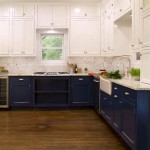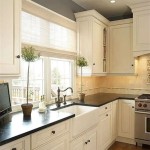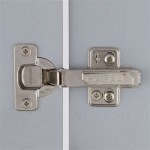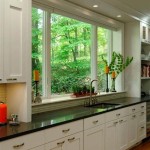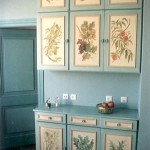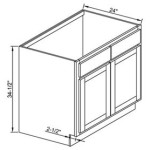1940s Kitchen Cabinet Pulls: A Study in Function and Form
The 1940s marked a significant period of change and innovation, influencing not just societal norms but also design aesthetics, particularly within the home. Kitchens, evolving from purely utilitarian spaces to central hubs of family life, saw a renewed focus on efficiency and appeal. This shift is clearly reflected in the hardware chosen for kitchen cabinetry, with 1940s kitchen cabinet pulls representing a distinct blend of functionality, durability, and evolving style trends.
Understanding the context of the decade is crucial to appreciating the design choices made in cabinet hardware. The early part of the 1940s was dominated by the Second World War, leading to material shortages and a necessary emphasis on practicality. Post-war, with the return of prosperity and the rise of suburban living, designs became more elaborate and focused on creating a comfortable and aesthetically pleasing home environment. This article will explore the key characteristics of 1940s kitchen cabinet pulls, examining materials, styles, and the influence of the era on their design and production.
Materials and Manufacturing Processes
The availability of materials significantly impacted the production of 1940s kitchen cabinet pulls. During the war years (roughly 1941-1945), metals like steel and brass were diverted to the war effort. This scarcity led to alternative solutions, including the use of wood, plastic (particularly Bakelite), and even glass in some cases. These materials were often employed in combination with smaller amounts of metal to maintain structural integrity and ease of use.
Following the war, metal production ramped up, and materials like chrome and nickel-plated brass became increasingly common. Steel, often painted or enameled, offered a durable and affordable option. The manufacturing processes of the time involved casting, stamping, and machining, with each method influencing the final appearance and quality of the pull. Casting allowed for intricate designs, while stamping was more suitable for mass production of simpler forms. Machining provided precise detailing and a refined finish.
Bakelite, a thermosetting phenol formaldehyde resin, was a popular choice due to its affordability, durability, and ability to be molded into various shapes and colors. Bakelite pulls often featured smooth, streamlined designs and were available in a range of colors from classic black and brown to vibrant reds, greens, and yellows, offering homeowners a chance to personalize their kitchens. The use of Bakelite reflects the ingenuity of designers in adapting to material limitations and creating attractive and functional hardware.
Wood, typically maple or birch, was another material embraced during the war years. Wooden pulls were often simple in design, reflecting the resourcefulness of the era. They could be stained, painted, or left with a natural finish, providing a warm and organic touch to kitchen cabinets. While wood was less durable than metal or Bakelite, it offered an affordable and readily available alternative during times of scarcity. The use of wood underscored the practicality and adaptability of design during wartime.
Common Styles and Design Aesthetics
The design of 1940s kitchen cabinet pulls reflected the broader trends in interior design, leaning towards a blend of Art Deco influences in the early part of the decade and a more streamlined, modern aesthetic in the post-war years. Simplicity and functionality were prioritized, but decorative elements were not entirely absent. The prevalent styles included simple knobs, streamlined bar pulls, and decorative bail or drop pulls.
Knobs were a common and practical choice, often made of Bakelite, wood, or painted metal. They typically featured a rounded or slightly faceted shape for easy gripping. Bar pulls, characterized by their elongated, horizontal design, became increasingly popular as the decade progressed. These pulls offered a clean, modern look and were often made of chrome or stainless steel. Their minimalist form complemented the streamlined designs of post-war kitchens.
Bail or drop pulls, featuring a decorative metal loop or drop suspended from a central mounting point, added a touch of elegance and sophistication to kitchen cabinets. These pulls were often made of brass or nickel and could incorporate intricate detailing or simple, geometric shapes. While less common than knobs or bar pulls, they provided a decorative option for homeowners seeking a more traditional or ornate look. The incorporation of decorative elements, even in subtle ways, reflects the desire to create a visually appealing and comfortable living space.
Color played a significant role in the overall aesthetic of 1940s kitchen cabinet pulls. While chrome and silver finishes were popular for their clean and modern look, painted metal and Bakelite pulls offered a wider range of color options. White, ivory, and pastel shades were commonly used to create a bright and airy kitchen environment. Bold colors like red, green, and yellow added a pop of personality and complemented the vibrant hues often found in 1940s kitchen decor. The use of color allowed homeowners to express their individual style and create a personalized kitchen space.
Influence of the Era on Design and Production
The socio-economic and political climate of the 1940s profoundly influenced the design and production of kitchen cabinet pulls. The war years fostered a culture of resourcefulness and practicality, leading to innovative use of alternative materials and simplified designs. Post-war prosperity and the rise of suburban living spurred a renewed focus on aesthetics and comfort, resulting in more elaborate designs and a wider range of material choices.
The war effort significantly impacted manufacturing processes. Mass production techniques, honed for wartime needs, were adapted to create affordable and efficient kitchen hardware. Standardization became a key factor, ensuring that replacement parts were readily available and that hardware could be easily installed. This emphasis on practicality and efficiency shaped the design and production of cabinet pulls for years to come.
The influence of the design movements of the time, such as Art Deco and mid-century modern, is evident in the styles of 1940s kitchen cabinet pulls. Art Deco's geometric shapes and streamlined forms can be seen in the early part of the decade, while mid-century modern's emphasis on simplicity and functionality is reflected in the post-war designs. These influences contributed to the evolution of kitchen cabinet pulls from purely utilitarian objects to integral elements of kitchen design.
The development of new technologies also played a role in the evolution of 1940s kitchen cabinet pulls. Advances in plastics manufacturing led to the widespread use of Bakelite and other synthetic materials. Improved metalworking techniques allowed for the creation of more intricate and durable hardware. These technological advancements contributed to the diversity and quality of kitchen cabinet pulls available during the decade.
Furthermore, the advertising and marketing strategies of the era influenced consumer preferences and purchasing decisions. Kitchen magazines and home improvement publications showcased the latest styles and trends in kitchen design, further contributing to the evolution of 1940s kitchen cabinet pulls. Advertisements often emphasized the durability, functionality, and aesthetic appeal of different hardware options, shaping consumer perceptions and driving demand for specific styles and materials.

Chrome Drawer Pulls 1940s Kitchen Hardware Variety Curved

Period Perfect Kitchen The 1940s Inside Arciform Cabinet Pulls Drawer

Chrome Drawer Pulls 1940s Kitchen Hardware Variety Curved

2 Antique Art Deco 1930s 1940s Chrome Metal Drawer Pulls Or Drawers

Chrome Drawer Pulls 1940s Kitchen Hardware Variety Curved

Appropriate Cabinet Hardware For Your Period Home Preservation Artisans Guild

1930s Kitchen These Are My 1939 Original Cabinets I Kept Hardware And Pai Vintage Cabinet Styles

Vintage Farmhouse 1940 S Kitchen Update

Kitchen And Baths Antique Cabinets Renovation Vintage

Need Help With My 1940s Kitchen Cabinets
Related Posts

